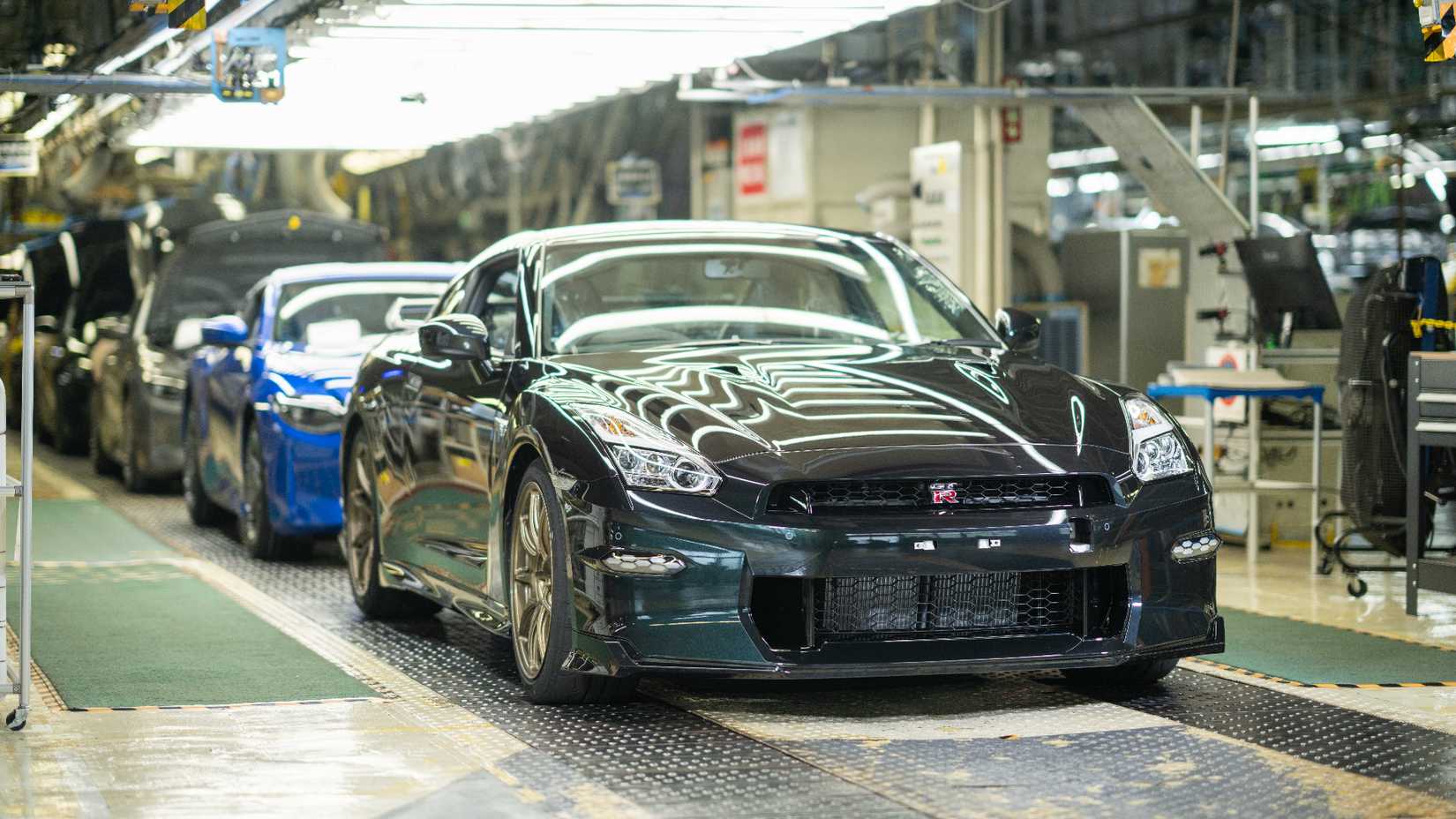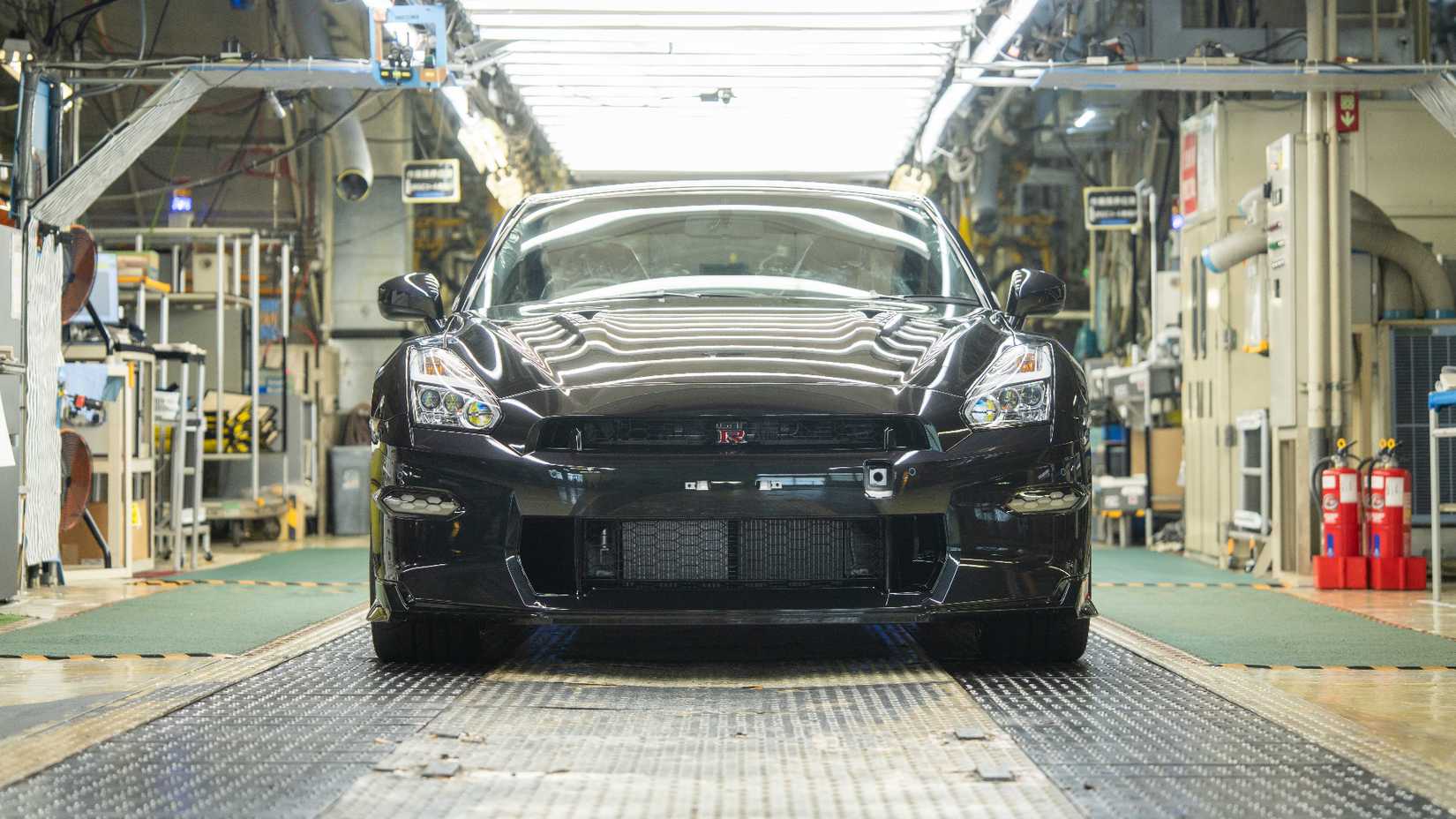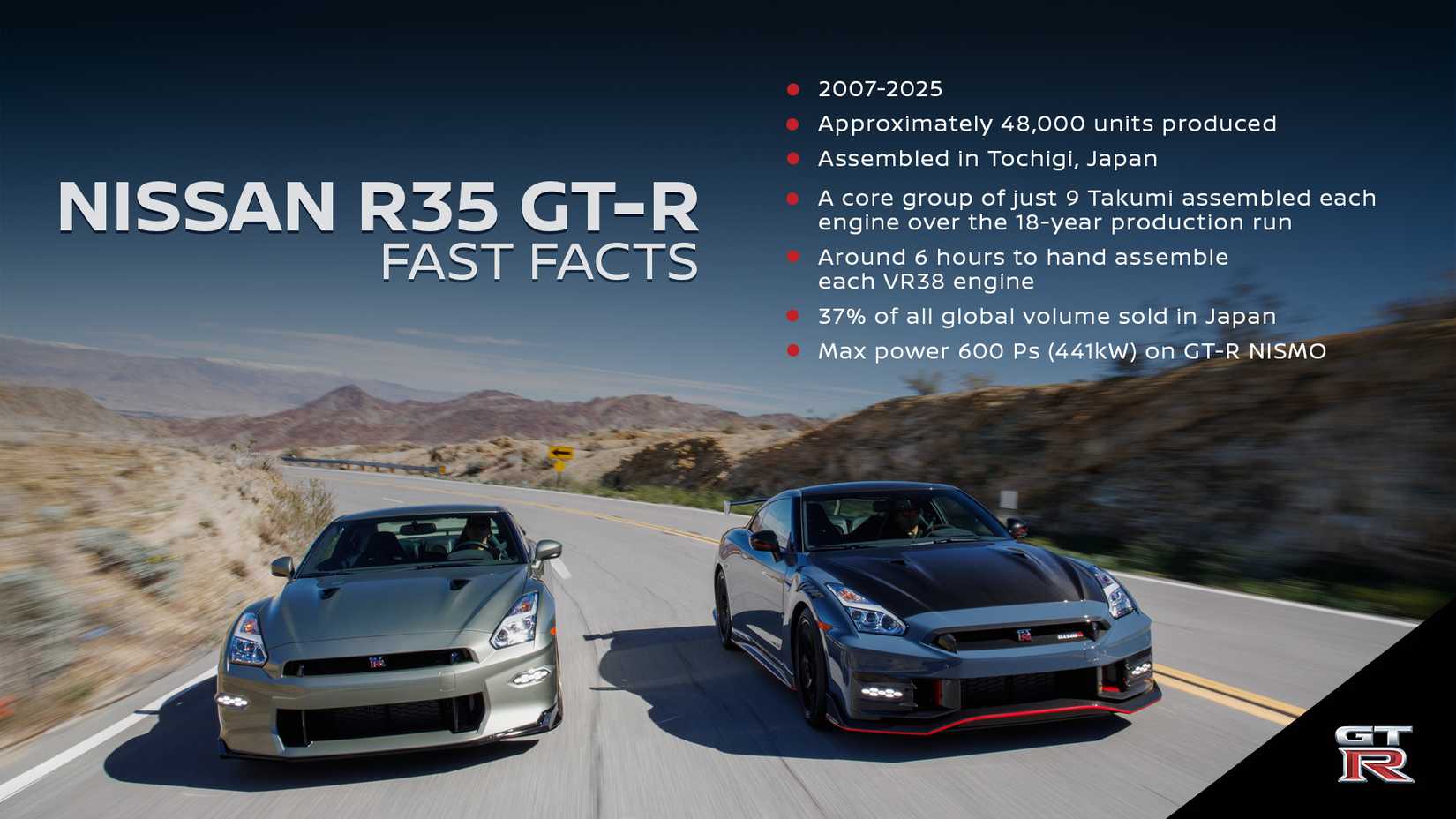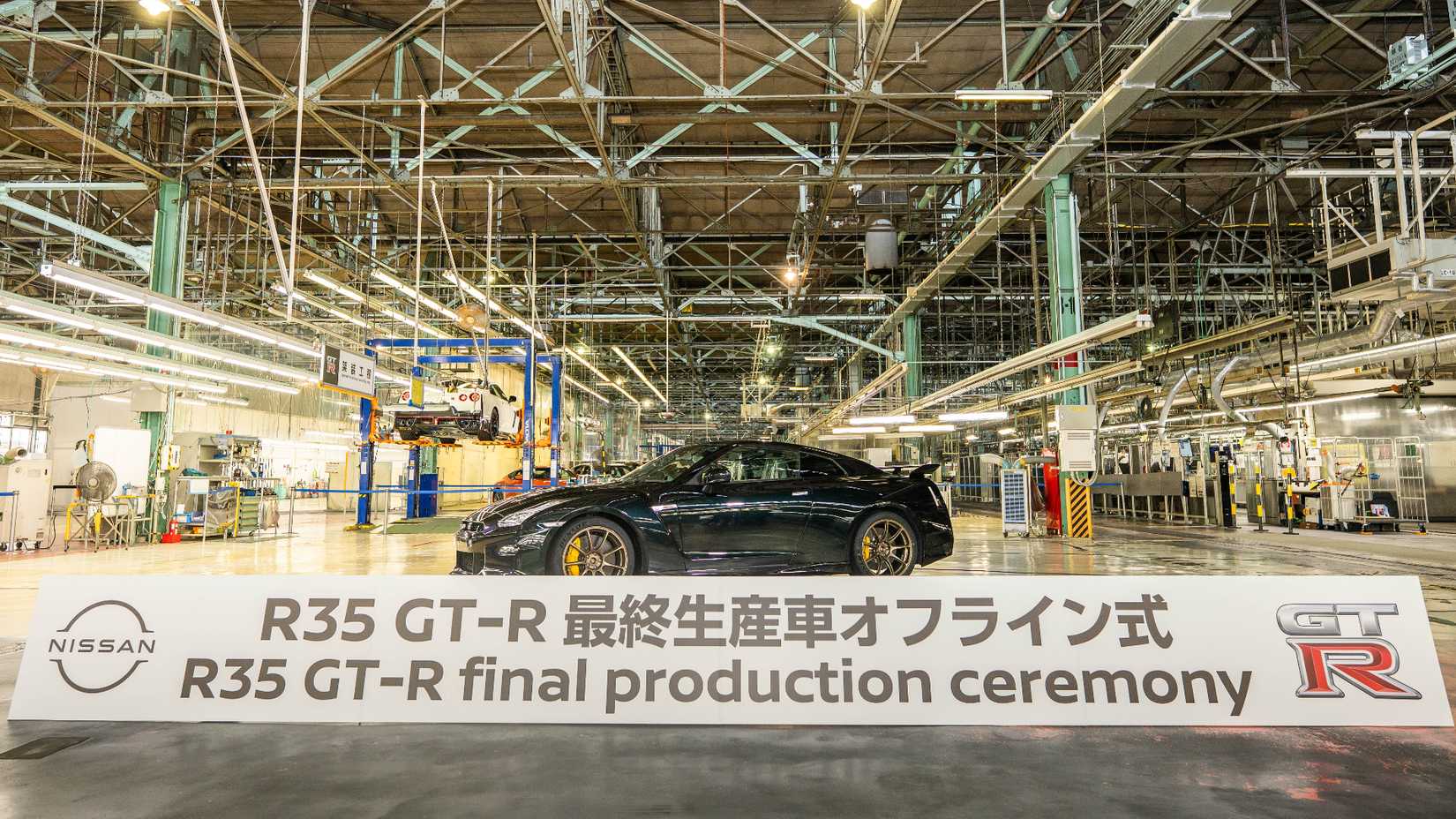
The final R35 Nissan GT-R rolled off the production line on August 26, 2025, and the automaker held a ceremony commemorating the sports coupe’s retirement. It’s the end of a long era after 18 years of production and building roughly 48,000 of them in that time. The final example was a Premium edition T-Spec model in Midnight Purple paint for a customer in Japan.

- Base Trim Engine
-
3.8L Twin-Turbo V6 Gas
- Base Trim Transmission
-
6-Speed Automatic
- Base Trim Drivetrain
-
All-Wheel Drive
Hiroshi Tamura was among the folks in attendance to watch the final R35 come off the assembly line. He has been involved in developing the automaker’s sports cars for years, earning him the nickname “Godfather of the GT-R” or simply “Mr. GT-R.” Tamura worked on the R35 program from the very beginning, including the initial concept in 2001. Now, he’s reflecting on the model’s past and offering his opinions about its future, including some tantalizing details of what he wants the R36’s powertrain to be.
“I have always said, and I still believe, that the GT-R is a car that represents the essence of Nissan’s DNA. This car embodies our passion for creating exciting cars and our commitment to extreme performance.”
– Hiroshi Tamura, Godfather of the GT-R
What Could The Next GT-R Be Like?
During Tamura’s interview with Nissan, he discussed his philosophy about the next one. From his statement, it doesn’t seem like we should expect to see the new machine too soon.
“Our starting point and goal will always be to bring smiles to our customers’ faces and provide true driving pleasure, so we ask everyone to be patient,” says Tamura. “There was a 16-year gap between the first-generation GT-R and the R32 GT-R, but Nissan never gave up on the GT-R.” As for what he wants for the next iteration of GT-R, Tamura’s hoping for combustion: “It is my personal hope that future GT-Rs will retain at least some of the engine sound. This does not represent the company’s intentions or direction, but is simply my personal preference.”
There are rumors with scant details about the next-gen GT-R. There’s some speculation it might be a hybrid or possibly even an EV. At the end of the production ceremony, Nissan President and CEO said: “To the many fans of the GT-R worldwide, I want to tell you this isn’t a goodbye to the GT-R forever, it’s our goal for the GT-R nameplate to one day make a return.”
How Tamura Helped Create Godzilla
Tamura pushed for some of the key things that made the R35 different from earlier GT-Rs. For example, he wanted the car to use a V6 engine because the shorter length would allow for a better weight balance by placing the powerplant behind the front axle. Previously, all generations of the GT-R had an inline-six. Tamura was also instrumental in the car’s use of a six-speed automatic gearbox.
“The two-pedal design was key. I read a technical paper in the early 2000s that introduced the new possibilities of dual-clutch transmissions,” he told Nissan. “Around 2003, we started to hear more and more reports that Italian super sports cars were adopting automatic transmissions and that their owners were very happy with them, and more and more people started to agree with my idea.”
Tamura was deeply involved in the R35’s entire development. “I’ve been to the Nürburgring more than 100 times, spending a total of about 500 days there. It’s a special place in the development of the R35 GT-R,” he said.
Tamura also shared an interesting anecdote about the T-Spec model. Its internal development name was TM, which stood for both “Trend Maker” and “Traction Master.” However, the production version’s name fit better with previous GT-R versions, such as the V-Spec and M-Spec.
The Godfather of the GT-R has good reason to be proud of this creation. There aren’t too many sports cars that get to evolve over 18 years rather than an automaker completely replacing them. Now we just have to hope that his vision of a combustion-powered sports car comes true for the R36.







